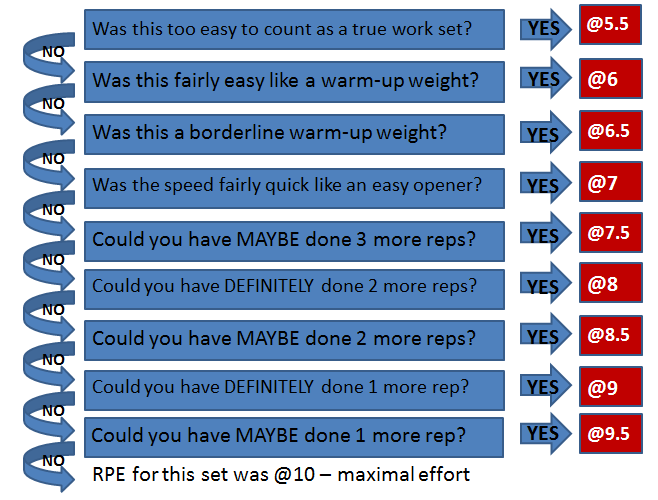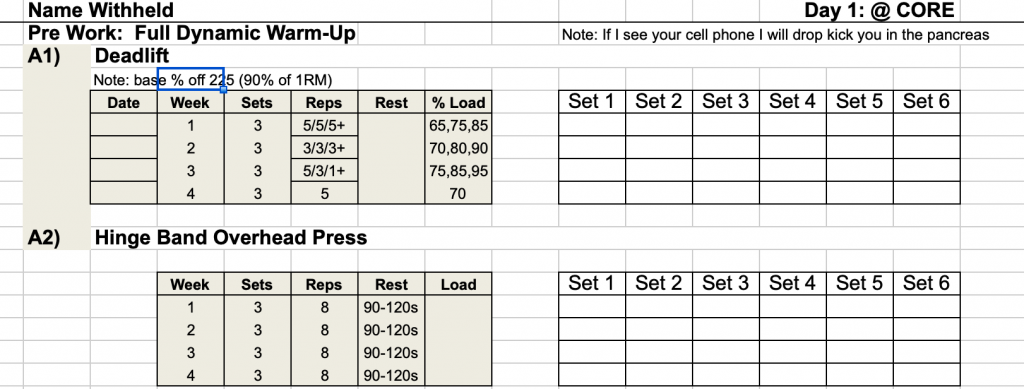I often say that what bogs down most fitness professionals, and what often causes the most stress, isn’t the x’s and o’s of program design, assessment, or breaking down the Creatine phosphorylation cycle.
Nor is it the ability to break down squat or overhead pressing technique.
Most coaches/trainers can do all the above without blinking an eye.1
Nope, what really grinds most fit pro’s gears is how to better motivate their clients and to get them to work hard(er).

Now, to be fair (and to add a sense of brevity), when I say “to get them to work hard(er)” I am not implying the word “hard” means someone trains to the point of shitting their kidney on their last set of cleans or that they can’t feel the right side of their face after finishing that day’s WOD.
Just so we’re on the same page…
I Am Not Referring to This
5 Tips to Get Your Clients to Train Hard(er)
1) Meet Them Where THEY Are
We all have biases as coaches. We all have notions of how most people we work with should train and what they need to do to get from Point A to Point B.
Using myself as an example:
“Lifting heavy shit.”
I’ll unabashedly admit that the bulk of people who walk through the doors at CORE already know what they’re getting themselves into
I mean, it doesn’t take a rocket scientist to take a gander at my logo and tagline to put 2 and 2 together:

I.e., we’re not participating in tickle fights.2
That said, I’ve made a massive philosophical change in my coaching style ever since marrying my wife, Dr. Lisa Lewis.
She’s a psychologist and knows a thing or two about Jedi mind-tricks.
To that end, I try really, really, really hard not to force feed and project MY preferences onto my clients. Granted I live in a bit of a strength & conditioning bubble where I don’t have to work very hard to convince new clients to understand and appreciate the benefits of strength training.
Many times people walk through the doors of CORE on Day #1 wanting to deadlift, or front squat, or discuss why Colton was a fool (and FOOL I tell you) to pick Cassie over Tayshia in the latest season of The Bachelor.
However, NEWSFLASH: a lot of people could give two shits about deadlifting 2x bodyweight or performing a low bar back squat.
Using the latter as a reference point, not many people have the ability to perform a barbell back squat well, and if I played the meanie head strength coach card all the time and forced every client to do it – even if it didn’t match their current ability level, injury history, or goal(s) – I’d be doing them a disservice and likely taking away from their training experience.
Doing our part and meeting our clients where THEY are – oh, you mean not everyone wants to train like a powerlifter? – would be the more germane and responsible approach.
If your client can’t perform a certain exercise because it’s too advanced (or worse, it hurts), then yeah, they’re not going to be very motivated to work hard.
2) Set Them Up For Success
I’m going to divulge a big (coaching) secret; something that will undoubtedly help separate any coaches/trainers who may be reading from the masses.
Wanna know what your clients want most and what will (likely) allow them to work harder?
No, it’s not a Instagram feed of you wearing yoga pants making a smoothie or posing shirtless next to a Tesla.
And it’s definitely not however many supplements you want to peddle their way.
Nope, what they really want is to not feel like an incompetent asshole on the gym floor.
The fitness industry likes bright shiny things; exercises that are flashy and look cool. That’s fine. I am not anti having a little fun in the gym.
That being said, lets stop with the exercises that take 13 minutes just to set up or are only good for garnering “likes” on social media.
I think the more prudent approach, and at the expense as coming across too “vanilla,” is to hammer the basics – squat, hinge, row, push, single leg, carry, core – and to use your skills as a coach to find out what variations of these patterns best fits the needs of your clients.
Want your clients to work hard(er)?
Set them up for success and provide a litany of exercises they can actually perform well and without feeling like a fool.
And then, you know, progress them accordingly.
3) Have Them Write Shit Down
Let me know if this sounds familiar:
Client: I’m frustrated by my lack of progress.
Me: Okay, lets break this down. Let me look at your program.
(looks at program)
Me: Why isn’t there anything written down?
Client: Oh, I just try to remember each week what I do.
Me: Excuse me, brb.
(tosses face into a brick wall).
Please.
Most people can barely remember what they had for dinner the night before let alone what they did on their third set of DB Bench Press last Wednesday.
“What gets tracked, gets managed”
I like to place a bit of accountability with my clients and encourage them – almost naggingly so – to WRITE THEIR SHIT DOWN FOR THER LOVE OF GOD.
4) Appreciate RPE
It’s one thing when I can have my eyes on a client and adjust load or otherwise provide instant feedback on their technique in real time.
It’s a whole different ballgame when a client trains on their own.
There’s always going to be a bit of trial and error, however most of the time (not always) I find people tend to UNDER-estimate how much weight they can lift when training on their own.
Lets say a program calls for 4×8 of a particular exercise and that’s exactly what a client does.
Great.
That’s half the battle3
Upon further inspection, though, when you bring up effort or Rate of Perceived Exertion (RPE), you come to the realization that they could have done eight more reps with that same weight.
[Cue The Price is Right horn here.]
Granted, they’re doing work, which should be celebrated…just not work that’s challenging enough (or, to be more specific, “work” that challenges the body and forces it to adapt to the load placed upon it).
Getting your clients to appreciate and adopt “RPE” to help provide feedback and direction in terms of what loads to use can be a game changer with regards to nudging them to work harder.

Courtesy of Mike Turscherer
5) Use a Teeny Tine Dose of Tough Love
Lastly, sometimes I like to write little notes into my client’s programs – especially those who can’t seem to live without their cell phone – to remind them that I have their best interests in mind.
Unless you’re a brain surgeon on call, leave your phone off the gym floor…;o)




